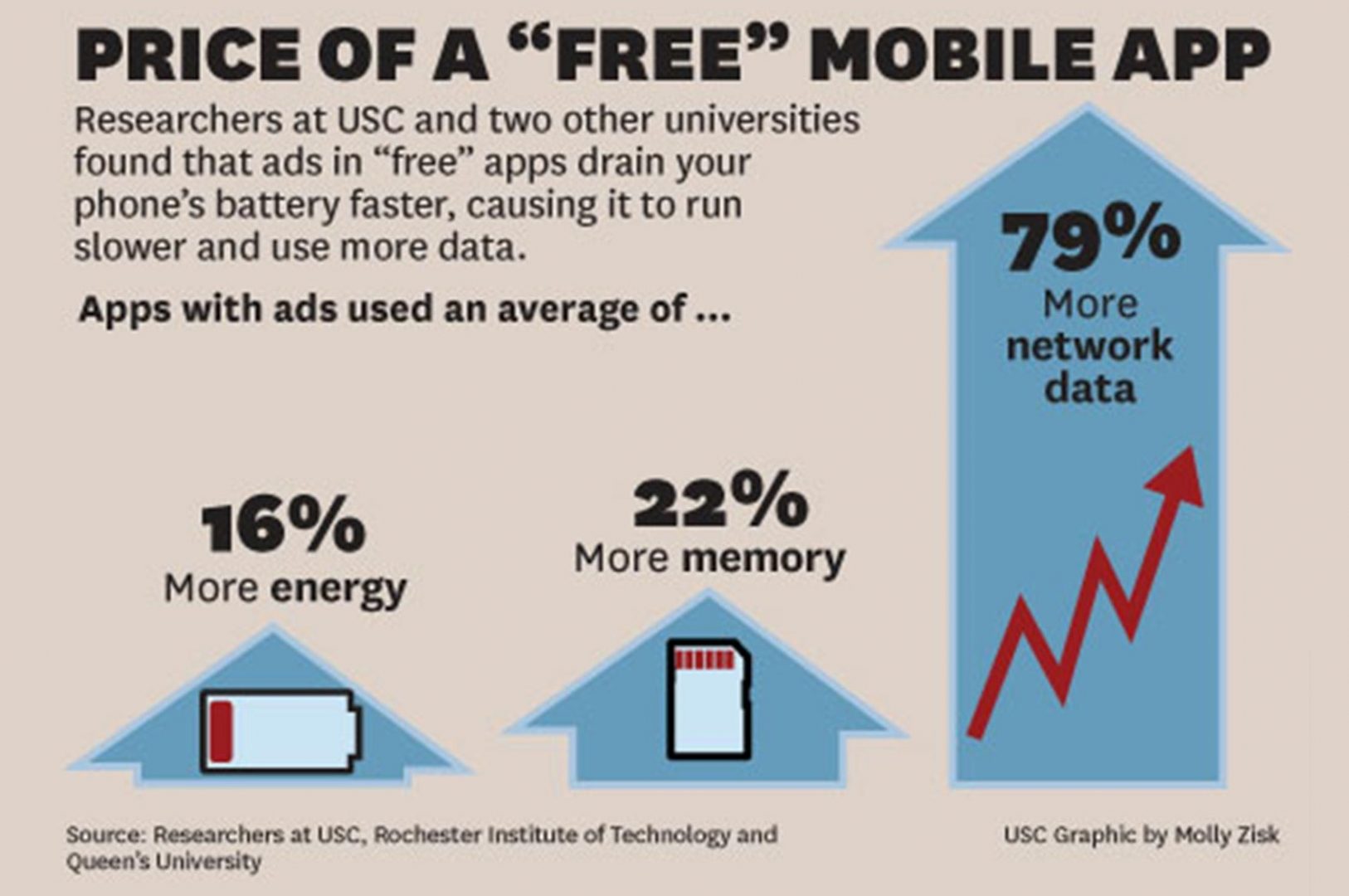[dropcap size=small]A[/dropcap]ll of us prefer free apps to the paid ones but the question arises [highlight ]”Are they really free?”, the answer is NO.[/highlight] At first glimpse they might make a fool out of anyone and seem to be free, not affecting our wallet but the tariffs that our Smartphone face are not something that can be overlooked. Toll that our smartphones take is probably more than those few nickels that you need to shell out of your pocket.
[alert type=red] If you get anything for free, always double check it.[/alert]
Nothing in this world comes for free, everything has a price and same goes for the free apps. Researchers of USC, along with two renowned universities of Canada, Rochester Institute of Technology (RIT) and Queen’s University did a thorough study of atrocious aftermath of downloading free apps and outcome of the study would compel smartphone users to think twice before installing the free apps. [highlight ]Study demonstrated that free apps utilize more data and severely affect the battery of the smartphone, making it sluggish.[/highlight]
Researchers compared free apps to the paid ones and ascertained that ads which get displayed from time to time while app is in action are the main villain that eat away the battery and culpable for all other aftereffect of apps.

[highlight color=#41bfa9 ]Effects on Battery[/highlight]
Battery backup is one of the issue that concerns smartphone users the most, and this might be shocking to some people that ads in free apps exhaust our battery on an average by 16 percent and bring the battery life down from 2.5 to 2.1 hours on average.
[highlight color=#41bfa9 ]Effects on Data[/highlight]
If you are connected to a Wi-Fi or some kind of data plan then the data usage does not bother you. But if you are currently on a limited data plan, then you must know this : ads are downloaded using your data plan and on an average, free apps use 79% of more data network.
[highlight color=#41bfa9 ]Effects on Processor[/highlight]
Processor is one of the element that governs the agility of the smartphone and the ads in apps acquire 22% extra memory, take 48% greater CPU time and 56% additional CPU utilization on an average.
These all factors can be noticed in the rating of an app, as frustrated users give low ratings to these kind of apps.
Source : News.usc.edu





